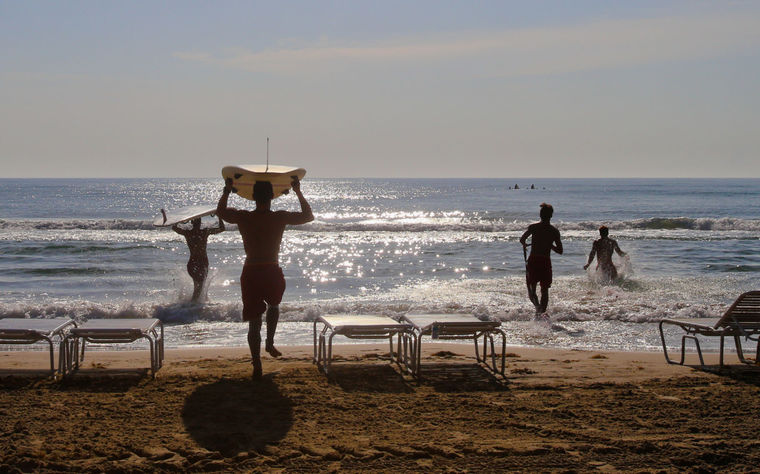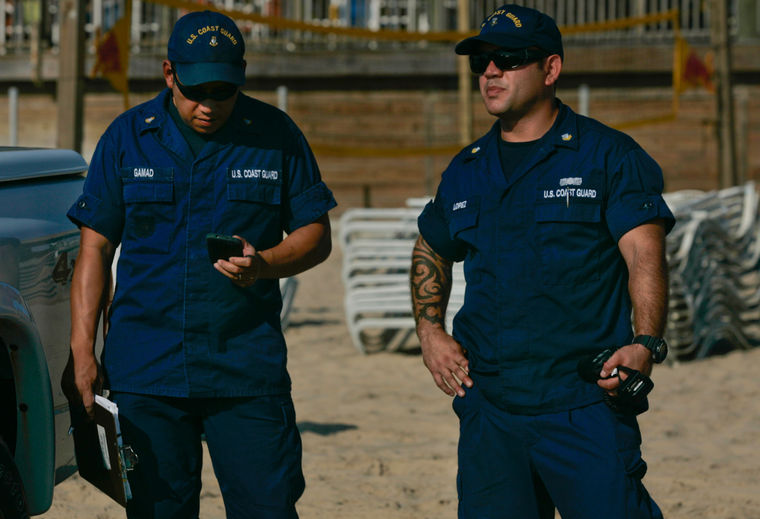

When life-threatening emergencies occur at the beach, a speedy response time can mean the difference between life and death. To be better prepared, Cameron County and South Padre Island lifeguards and U.S. Coast Guard officials honed their skills Wednesday morning as part of an Operation Brite training session.
Operation Brite provides training through mock scenarios that can occur at any time, such as rescuing a stranded swimmer. SPI Fire Chief Marcus Smith said the quarterly training sessions are vital to rescue operations. “When we have a rescue situation, time really does matter, and by working together to accomplish that task we have a much better chance of rescuing that individual,” Smith said. He said the fire department oversees 24 lifeguards, with 11 stationed on South Padre Island beaches, and works closely with the Coast Guard to protect the beaches and beachgoers. Smith explained the Coast Guard also helps recover bodies in the water because crashing waves sometimes make the task difficult.
County lifeguards augment the city’s rescuers, he said.
“It’s all about interagency communications to make sure we can communicate, coordinate and complete the task at hand,” Smith said.
Art Hurtado, operations captain at the Cameron County Beach Patrol, oversaw four county lifeguards at Wednesday’s training session. Although the guards were new to Operation Brite, Hurtado said the session enabled them to practice the most basic life-guarding task, retrieving someone from the water.
Hurtado said this training session had been planned before the season began in June, giving the lifeguards plenty of time to prepare. Given that most people aren’t strong swimmers, most accidents occur between the first and second sandbar, about 200-500 meters out in the water, Hurtado said.
Eli Haynie,18, joined the county beach patrol this summer but had previously served as a lifeguard in Ocean City, Maryland. Haynie explained that a lifeguard on a rescue mission must first perform a health assessment of the person being rescued. In events like the mock-scenario presented Wednesday, a capsized vessel might render swimmers with broken bones or lacerations, he said.
U.S. Coast Guard Chief Benjamin Gamad said using a boat during the training session had been planned. Gamad said five to six Coast Guard members would be involved in the training to render assistance either as a spotter or to aid on the platform where people might be taken in the boat.




